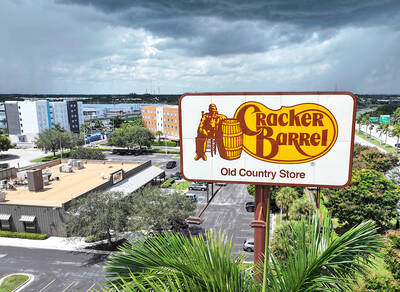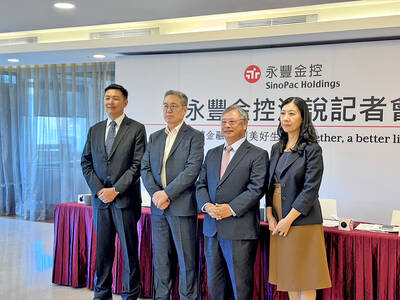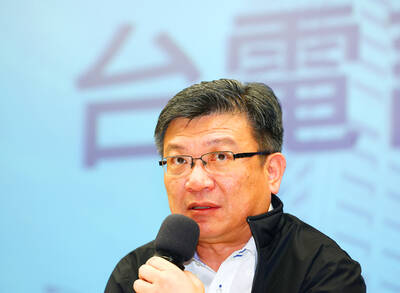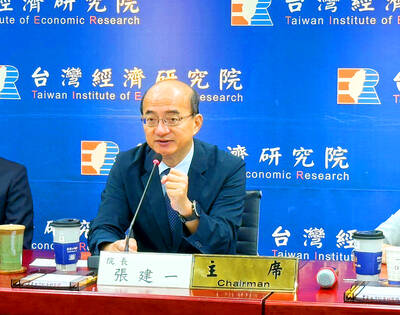Japan’s Shinsei Bank and Aozora Bank yesterday confirmed that a merger planned for later this year has been scrapped, with the mid-sized lenders at odds over business strategy.
The announcement sent shares in both companies plummeting and prompted a rebuke from the country’s banking minister toward Shinsei.
“Aozora Bank today announced the cancellation of the merger with Shinsei Bank by mutual agreement,” a statement said without disclosing details.
The collapse of the deal leaves the two lenders — both backed by US private-equity firms — facing the tough prospect of rebuilding in a saturated market. Shinsei, which means “rebirth” in Japanese, and Aozora, which means “blue skies,” suffered in the global financial crisis and last year announced a planned merger that would create the nation’s sixth-biggest commercial bank.
However, negotiations ground to a halt, with Shinsei seeking to expand its retail operations and Aozora more keen on working with regional banks. Reports also said the two sides were unable to agree on a name for the new bank.
“We decided to shelve the merger talks. As talks progressed opinions diverged,” Aozora spokesman Tsutomu Jimbo said.
He added that the banks were still working on details over a possible new business alliance without giving details.
“Instead of spending time on bringing together merger conditions and management strategies, we decided that expanding each of our strengths separately was the top priority,” he added.
Shinsei, which is about one-third owned by US buyout firm JC Flowers & Co, was hit hard by the global credit crunch last year.
Aozora, which is roughly half owned by US investment fund Cerberus, fell deep into the red over its exposure to failed Wall Street giant Lehman Brothers and other bad investments.
Both organizations were bailed out with public money during Japan’s banking crisis of the 1990s and later sold to private investors. Both remain part-owned by the Japanese government.
Japanese banking minister Shizuka Kamei yesterday said that the government should continue supervising Shinsei, “considering that it has received taxpayer money. We should continue issuing strict instructions.”
Shares of Shinsei, which was downgraded this week by ratings agency Fitch, slumped as much as 4 percent in Tokyo afternoon trade following the news.
The bank saw a loss of ¥140.15 billion (US$1.51 billion) in the financial year ended March. Revenue was down 5.9 percent to ¥566.34 billion. For the current fiscal year ending March next year, it forecast a net profit of ¥12.5 billion. Incoming director Shigeki Toma told reporters that a tie-up with another lender was an option, hours after the bank announced it had terminated merger talks with Aozora.
Meanwhile, Aozora said yesterday it bounced back to the black in the last fiscal year due to growth in core earnings and cost-cutting efforts.
Net profit amounted to ¥8.3 billion from a ¥243 billion loss in the previous fiscal year. Revenue fell to ¥146.1 billion from ¥182.6 billion a year ago.
For the current financial year it forecast net income of ¥14 billion on revenue of ¥125.0 billion. Shares of Aozora were 4.16 percent lower in Tokyo trading.

On Tuesday, US President Donald Trump weighed in on a pressing national issue: The rebranding of a restaurant chain. Last week, Cracker Barrel, a Tennessee company whose nationwide locations lean heavily on a cozy, old-timey aesthetic — “rocking chairs on the porch, a warm fire in the hearth, peg games on the table” — announced it was updating its logo. Uncle Herschel, the man who once appeared next to the letters with a barrel, was gone. It sparked ire on the right, with Donald Trump Jr leading a charge against the rebranding: “WTF is wrong with Cracker Barrel?!” Later, Trump Sr weighed

SinoPac Financial Holdings Co (永豐金控) is weighing whether to add a life insurance business to its portfolio, but would tread cautiously after completing three acquisitions in quick succession, president Stanley Chu (朱士廷) said yesterday. “We are carefully considering whether life insurance should play a role in SinoPac’s business map,” Chu told reporters ahead of an earnings conference. “Our priority is to ensure the success of the deals we have already made, even though we are tracking some possible targets.” Local media have reported that Mercuries Life Insurance Co (三商美邦人壽), which is seeking buyers amid financial strains, has invited three financial

BACK IN BLACK: Net losses improved to NT$15.5 billion from NT$60.2 billion, while gross margin returned to positive territory for the first time in four years, it said State-run utility Taiwan Power Co (Taipower, 台電) yesterday said it was “highly possible” the company could turn its financial situation around this year after reporting profits from May on the back of lower fuel costs. The New Taiwan dollar’s appreciation against the US dollar and higher summer electricity rates also boosted the company’s bottom line, Taipower chairman Tseng Wen-sheng (曾文生) said. Electricity rates are about 20 percent higher on average during the summer, while power consumption usually soars 40 percent over other seasons because of higher temperatures, Taipower data showed. Revenue rose 16 percent year-on-year in the first half of this year to

CAUTION: Right now, artificial intelligence runs on faith, not productivity and eventually, the risk of a bubble will emerge,’ TIER economist Gordon Sun said Taiwanese manufacturers turned more optimistic last month, ending a five-month streak of declining sentiment as concerns over US tariffs, currency volatility and China’s overcapacity began to ease, the Taiwan Institute of Economic Research (TIER) said yesterday. The manufacturing business confidence index rose 1.17 points from June to 86.8, its first rebound since February. TIER economist Gordon Sun (孫明德) attributed the uptick to fading trade uncertainties, a steadier New Taiwan dollar and reduced competitive pressure from Chinese producers. Taiwan’s semiconductor industry is unlikely to face significant damage from Washington’s ongoing probe into semiconductors, given the US’ reliance on Taiwanese chips to power artificial